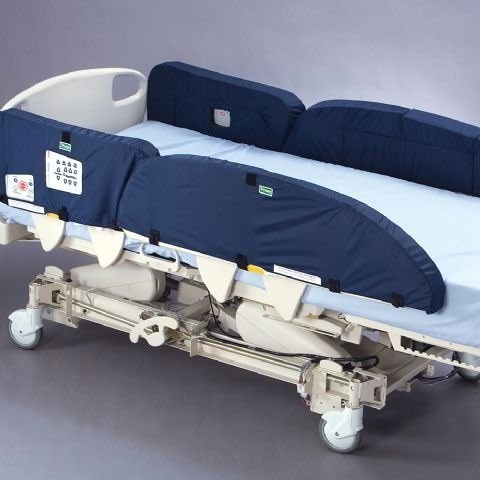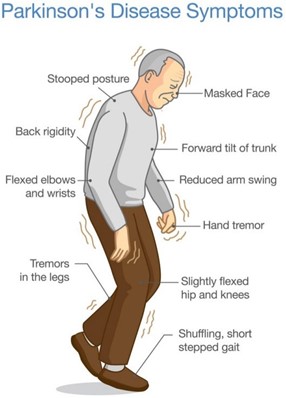A nurse is preparing to admit a client who has bacterial meningitis. Which of the following items should the
nurse place in the client's room?
Oral irrigating device
Seizure pads
Sterile gloves
Tongue blade
The Correct Answer is B
b. Seizure pads
Explanation:
The nurse should place seizure pads in the client's room when admitting a client with bacterial meningitis. Bacterial meningitis is an infection that affects the meninges, the protective membranes covering the brain and spinal cord. It can cause inflammation and swelling of the brain, leading to an increased risk of seizures.
Seizure pads are specifically designed to provide a cushioning and protective barrier between the client's head and the hard surface, reducing the risk of injury during a seizure. They are placed on the bed or matress to help prevent head trauma or other injuries that may occur if a seizure occurs.
Now, let's discuss why the other options are not necessary for the client with bacterial meningitis:
a. Oral irrigating device:
An oral irrigating device is not necessary for a client with bacterial meningitis. Bacterial meningitis primarily affects the central nervous system and does not require oral care interventions. The focus of care for these clients is on managing the infection, monitoring vital signs, and providing supportive care.
c. Sterile gloves:
While sterile gloves are commonly used in healthcare settings, they are not specifically required for the care of a client with bacterial meningitis. Standard precautions, including the use of non-sterile gloves, are sufficient for providing care to these clients. Sterile gloves are typically used for invasive procedures or when there is a need to maintain a sterile field.
d. Tongue blade:
A tongue blade is not necessary for the care of a client with bacterial meningitis. Tongue blades are typically used for oral assessments or when examining the throat, which are not directly related to the management or treatment of bacterial meningitis. The focus of care for these clients is on infection control, monitoring for complications, and providing comfort and support.
In summary, when admitting a client with bacterial meningitis, the nurse should prioritize placing seizure pads in the client's room to ensure their safety during potential seizure activity.

Nursing Test Bank
Naxlex Comprehensive Predictor Exams
Related Questions
Correct Answer is B
Explanation
To effectively communicate with a client who speaks a different language, it is important to use alternative methods of communication. One effective method is to supplement spoken language with pictures or visual aids. This can help bridge the language barrier and enhance understanding between the nurse and the client.
Recognize that the client nodding indicates an understanding of the information: Nodding does not always indicate understanding. It could be a cultural gesture or a sign of politeness. Relying solely on nodding may lead to miscommunication and misunderstanding.
Speak to the client at an increased volume: Speaking louder does not necessarily overcome the language barrier. It may make communication more difficult and could be perceived as rude or intimidating.
Ask a family member of the client to interpret: While involving a family member may seem helpful, it is not always reliable or appropriate. Family members may not be proficient in both languages or may not fully understand medical terminology. Additionally, the client may desire privacy or may not want to burden their family members with the responsibility of interpretation.
Correct Answer is B
Explanation
b. Keep suction equipment at the client's bedside.
The nurse should plan to include keeping suction equipment at the client's bedside as an intervention for a client with Parkinson's disease. Parkinson's disease can cause dysphagia (difficulty swallowing) and an increased risk of aspiration. Having suction equipment readily available allows for prompt intervention in case of choking or aspiration episodes, ensuring the client's safety.
Explanation for the other options:
a. Restrict the client's fluid intake: Restricting the client's fluid intake is not typically indicated in the care of a client with Parkinson's disease. Adequate hydration is important for overall health and well-being. However, specific fluid restrictions may be necessary in certain situations, such as if the client has coexisting conditions like heart failure or kidney disease, which should be assessed and determined by the healthcare provider.
c. Instruct the client to look down when ambulating: In Parkinson's disease, individuals often experience a forward-flexed posture and a shuffling gait. Instructing the client to look down when ambulating is not an appropriate intervention. Instead, the nurse should encourage the client to maintain an upright posture, take smaller steps, and focus on taking deliberate and controlled movements to promote stability and reduce the risk of falls.
d. Position the client supine after eating: Positioning the client supine after eating is not recommended for a client with Parkinson's disease. This position can increase the risk of aspiration, as it may promote reflux and regurgitation of stomach contents. Instead, the nurse should advise the client to maintain an upright position, such as sitting in a chair or using a recliner with appropriate head support, to aid digestion and reduce the risk of aspiration.

Whether you are a student looking to ace your exams or a practicing nurse seeking to enhance your expertise , our nursing education contents will empower you with the confidence and competence to make a difference in the lives of patients and become a respected leader in the healthcare field.
Visit Naxlex, invest in your future and unlock endless possibilities with our unparalleled nursing education contents today
Report Wrong Answer on the Current Question
Do you disagree with the answer? If yes, what is your expected answer? Explain.
Kindly be descriptive with the issue you are facing.
